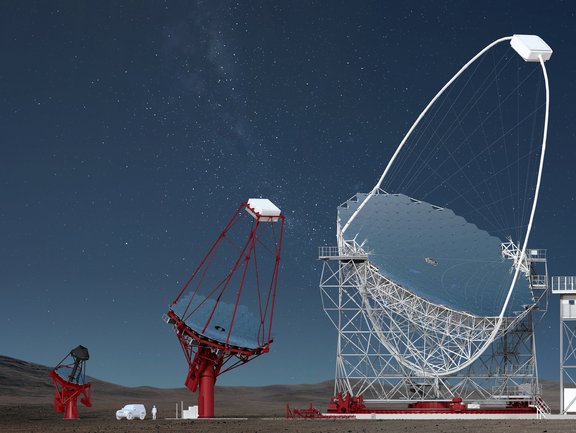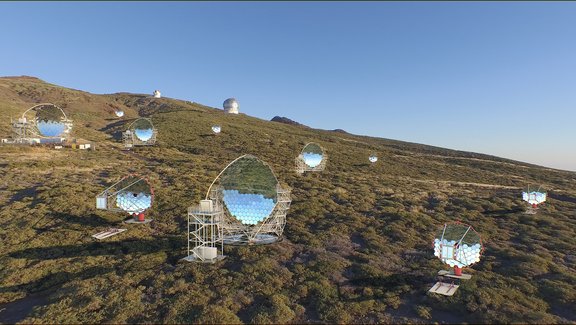The European Commission has established the Cherenkov Telescope Array Observatory (CTAO) as a European Research Infrastructure Consortium (ERIC). This step marks the beginning of the world's largest and most powerful observatory for gamma-ray astronomy and will help answer key questions in astrophysics.
The CTAO ERIC was established with the support of 11 countries and the European Southern Observatory. “We are grateful to our founding members for their support and to the European Commission for reaffirming their confidence in the CTAO as a world-class research infrastructure”, said Dr. Stuart McMuldroch, CTAO Managing Director.
The ERIC not only provides the Central Organisation with a formal framework to accept and operate the current telescope prototypes, but it also allows for the immediate start of construction for the full array of more than 60 telescopes across both telescope sites in La Palma (Spain) and the Atacama Desert in Chile. “On the CTAO-North site, where the Large-Sized Telescope prototype (LST-1) is under commissioning, three additional LSTs and one Medium-Sized Telescope (MST) are expected to be built in the following years. Meanwhile, on the CTAO-South site, first complete Small-Sized Telescopes (SSTs) and MSTs are expected in 2026", explains Prof. Jim Hinton, director at the Max-Planck-Institut für Kernphysik (MPIK) in Heidelberg. Scientists from the MPIK are playing a key role in the development of the highly sensitive MST and SMT cameras.
“Thus, with the aid of the ERIC, the Observatory is expected to be able to operate intermediate array configurations as early as 2026, bringing the Observatory’s early science within reach”, adds Prof. Werner Hofmann from the MPIK, one of the leading initiators of the whole project.
Further information can be found on the official CTAO press release.
A video explaining CTAO and its goals can be found here.
![[Translate to English:]](/mpi/fileadmin/_processed_/3/b/csm_ctao_logo_b031bfd8a4.png)

